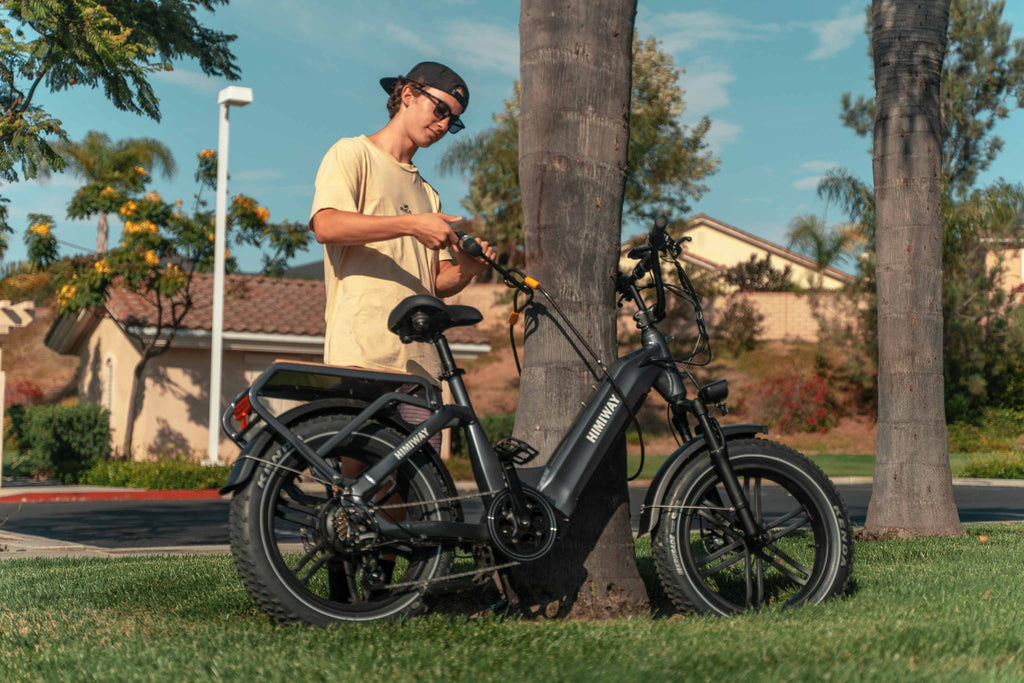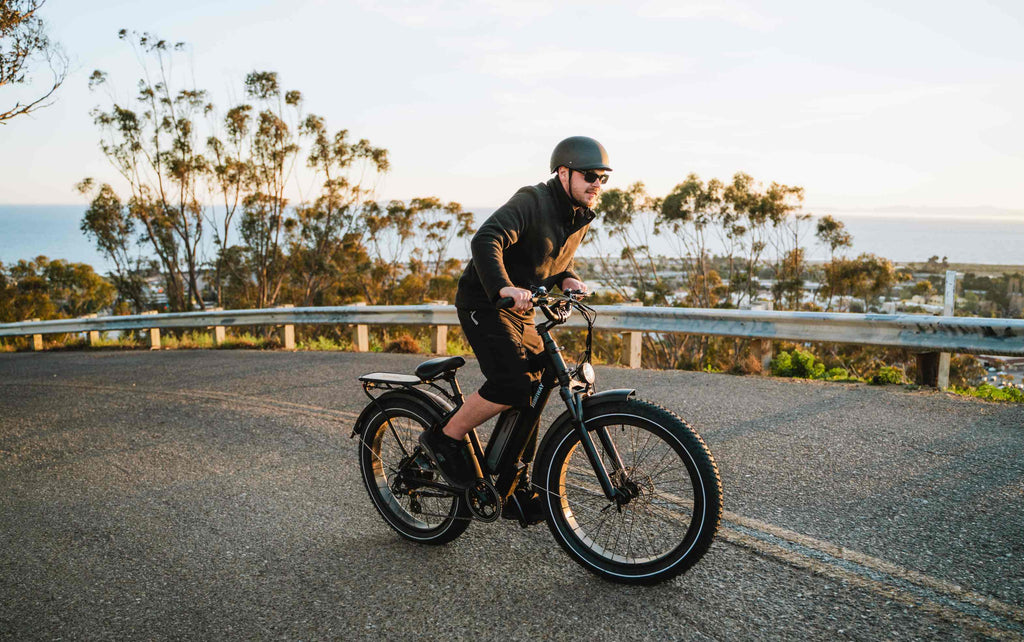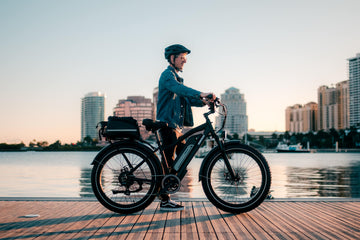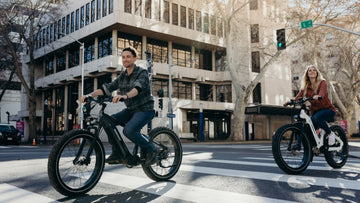Electric bikes have become increasingly popular over the past few years as they offer a convenient and environmentally friendly mode of transportation. However, as with any vehicle, it is essential to prioritize safety while riding an electric bike.
One effective way to ensure this is by implementing an electric bike safety checklist before every ride. This article outlines some of the best practices to stay protected while riding an electric bike and provide you with a comprehensive electric bike safety checklist that you can use to keep yourself safe on the road.

Importance of Electric Bike Safety
Electric bikes, like any other mode of transportation, pose certain safety risks to their riders. Here are some of the critical reasons why electric bike safety is so important:
- 1. Avoiding Accidents: Safety measures such as wearing a helmet, obeying traffic laws, and being aware of your surroundings can help prevent accidents and injuries.
- 2. Maintaining Bike Performance: Regular maintenance and safety checks can help keep your long range electric bike in good condition and prevent malfunctions that could cause accidents.
- 3. Public Perception: As electric bikes become more popular, it's essential to maintain a positive public image. Practicing safe riding habits can help improve public perception of electric bicycles and encourage more people to use them as a sustainable mode of transportation.
Pre-ride Checklist
Inspect the Electric Bike Before Each Ride
- 1. Tire Pressure: Check the tire pressure and ensure it matches the bike's recommended PSI. Low tire pressure can affect the performance of the bike and can make it challenging to ride.
- 2. Brakes: Ensure that the brakes are working correctly. Test both the front and rear brakes by gently squeezing the brake levers. The brakes should engage smoothly and evenly without any grinding or squeaking noises.
- 3. Lights: Check that the lights on the bike are working correctly, especially if you plan on riding in low-light conditions. Test the headlight, taillight, and any other lights on the bike.
- 4. Horn: Test the horn to make sure it is working properly. This is especially important in busy areas where you need to alert pedestrians or other riders of your presence.
Make Sure the Battery Is Fully Charged
Before riding your e-bike, it's essential to ensure that the battery has enough charge to power your ride. A fully charged battery can help you avoid running out of power while riding, especially if you’re planning a long-distance or challenging trip.
An electric bike with a good battery is advisable, just like the one available with the Himiway Cruiser. The Himiway Cruiser fat tire electric bike combines the new 48V 17.5AH Samsung/LG Lithium-ion Battery to ensure a long life expectancy and outstanding performance.
The bike battery range offers up to 60+ miles per charge on pedal-assist mode and around 35 miles on pure electric power mode. Faulty batteries should be changed.
The Himiway Big Dog is equipped with a 750W gear motor, a specialized inner ring, and a 48V 20Ah Samsung/LG battery. The 20-inch fat tire electric bike offers excellent mechanical stability and grip and is also an electric cargo bicycle. These features make the bike a great option for riding safely.
When choosing a battery for an electric bike, there are several factors to consider, such as the battery capacity, voltage, brand, and warranty. Ultimately, the best battery for your electric bike will depend on your specific needs and budget.
Protective Gear
Wearing the appropriate protective bike gear can help reduce the risk of injury and make your ride more enjoyable.
Some of the electric motor bike gear to consider includes the following:
- 1. Helmet: A helmet is a must-have for any bike ride, including e-bikes. Make sure it fits appropriately and is snugly secured to your head.
- 2. Eye Protection: Sunglasses or clear glasses can help protect your eyes from the wind, sun, and any debris that might be kicked up from the road.
- 3. Gloves: Gloves can provide extra grip and comfort while riding and also help protect your hands in case of a fall.
- 4. Protective Clothing: Depending on your riding style and location, you may want to wear protective clothing such as padded shorts, knee, and elbow pads, or a protective jacket.

On-The-Road Checklist
Obey Traffic Laws and Local Regulations
As an e-bike rider in the UK, it's essential to be aware of the electric bike UK law and follow all traffic and local regulations. The electric bike UK law stipulates that e-bikes must have no more than 250 watts and cannot assist the rider beyond 15.5 mph.
Additionally, e-bikes must have working pedals and comply with specific safety requirements, such as having lights and reflectors.
Ride Defensively and Be Aware of Hazards
Make sure you are visible to other drivers on the road by wearing bright and reflective clothing, using lights, and riding in well-lit areas.
Keep your eyes and ears open for potential hazards, such as cars pulling out of driveways or pedestrians crossing the street. Be aware of your surroundings and anticipate potential risks.
Intersections can be dangerous for electric bike riders. Look both ways before crossing, and be prepared to stop quickly if necessary.
Communication With Other Road Users
Hand signals are an effective way to communicate with other riders and drivers while driving an electric bike. Using hand signals can help you to indicate your intentions, warn others of potential hazards, and ensure that everyone on the road is aware of your presence.
Here are some standard hand signals that you can use:
- 1. Turn Signals: Use your left arm to signal a left turn by extending it straight to the side. Use your right arm to signal a right turn by extending it straight to the side or bending your elbow and pointing upward.
- 2. Stop Signal: Use your left arm to signal a stop by extending it downward with your palm facing backward.
- 3. Hazard Signal: Use your left arm to signal a hazard on the road by extending it out to the side and pointing downward.
It's important to remember that hand signals should be used in addition to, not instead of your electric bike's lights and turn signals.
Use polite gestures, such as waving or nodding, to acknowledge other riders and drivers on the road. Ensure you use your bell or horn to alert pedestrians or other riders of your presence on the road.
Avoid Distractions
Before starting your electric bike, put away your phone or anything else distracting you from the road. If you need to use your phone for navigation, consider using a hands-free device or a mount.
Also, plan your route and familiarize yourself with the road conditions before starting. This will help you avoid unexpected turns and obstacles and allow you to stay focused on the road.
Don't ride when you're tired, under the influence of drugs or alcohol, or feeling unwell. Stay alert and focused on the road at all times.
Maintaining a Safe Distance
The general rule of thumb is maintaining at least a 2-second following distance. This will give you enough time to react if the vehicle in front of you suddenly stops or slows down.
Look for obstacles on the road, such as potholes, debris, or other hazards. If you spot a block ahead, slow down and steer around it if possible.
Electric bikes can be challenging for other drivers to see, so be extra careful when riding in areas with blind spots, such as near large trucks or buses. Always assume that other drivers cannot see you, and take extra precautions to stay out of their way.
Lane splitting, or riding between lanes of traffic, is not legal in all areas and can be dangerous.
Post-ride Checklist
Park Your Electric Bike in a Safe and Secure Location
When you are done riding, park your e-bike in a safe and secure location. Many cities have designated bike parking areas or bike racks. Look for these areas and use them to park your electric bike.
These are usually high-traffic areas where your bike is less likely to be stolen. Ensure that your e-bike is locked with a sturdy bike lock. Choose a lock that is difficult to cut or break, and lock it through the frame and wheels of your bike.
Clean and Maintain the Electric Bike Regularly
Regular maintenance and cleaning of an electric bike are crucial to ensuring its longevity and peak performance.
After your ride, start a fat tire bike cleaning with a soft cloth and a mild cleaning solution. Pay special attention to the chain, derailleur, and brakes, as these parts are most likely to accumulate dirt and grime.
Test the brakes to ensure they are functioning correctly. If you notice brake issues, such as squeaking or reduced stopping power, take the bike to a professional for maintenance.
Remove the Battery and Store It in a Safe Place
It is common practice to safely remove and store the battery as part of the safety and maintenance measures when using an electric bike. Lithium-ion batteries, commonly used in electric bikes, can be sensitive to temperature changes and degrade over time.
Storing the battery in a cool, dry place away from direct sunlight can help prolong its lifespan. Additionally, removing the battery from the bike can prevent any accidental activation of the motor, which could cause injury or damage.
Check for Wear and Tear
After you finish riding an electric bike, performing a post-ride inspection is essential to check for any damages or wear and tear.
Check the tires for punctures, cuts, or excessive wear. Inspect the frame for cracks, dents, or damage. Test the lights to ensure they are working correctly. Replace burnt-out bulbs.
The chain is a critical component of your electric bike and needs to be well-lubricated to function correctly. Check the chain for any signs of wear and tear, and apply lubricant if necessary.

Conclusion
Having a high-quality bike that is properly maintained is the first step in making riding an electric bicycle enjoyable.
Practicing electric bike safety is essential for protecting the rider and others on the road. Following a comprehensive safety checklist, riders can ensure that their electric bicycles are properly functioning and equipped with protective gear.





























